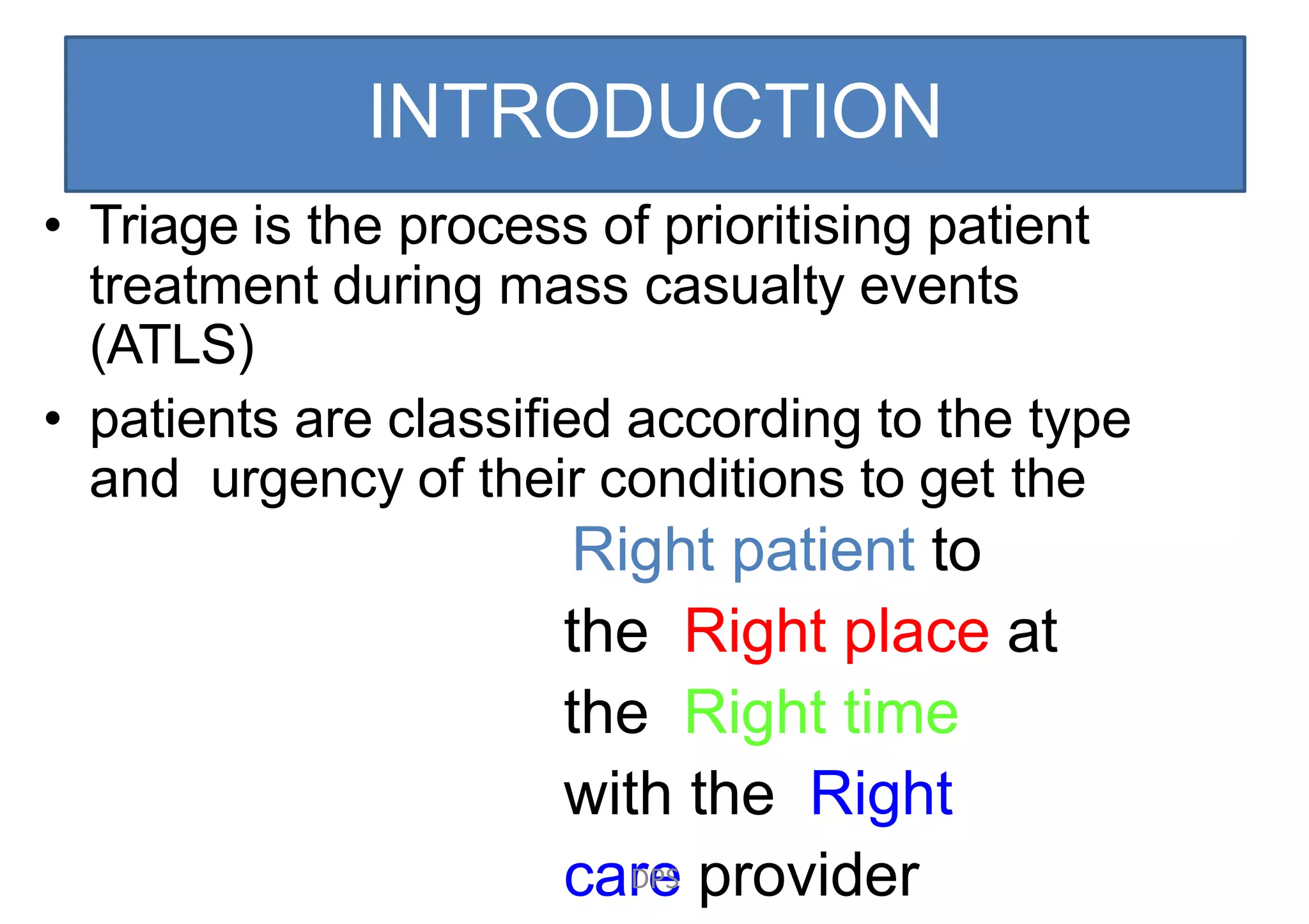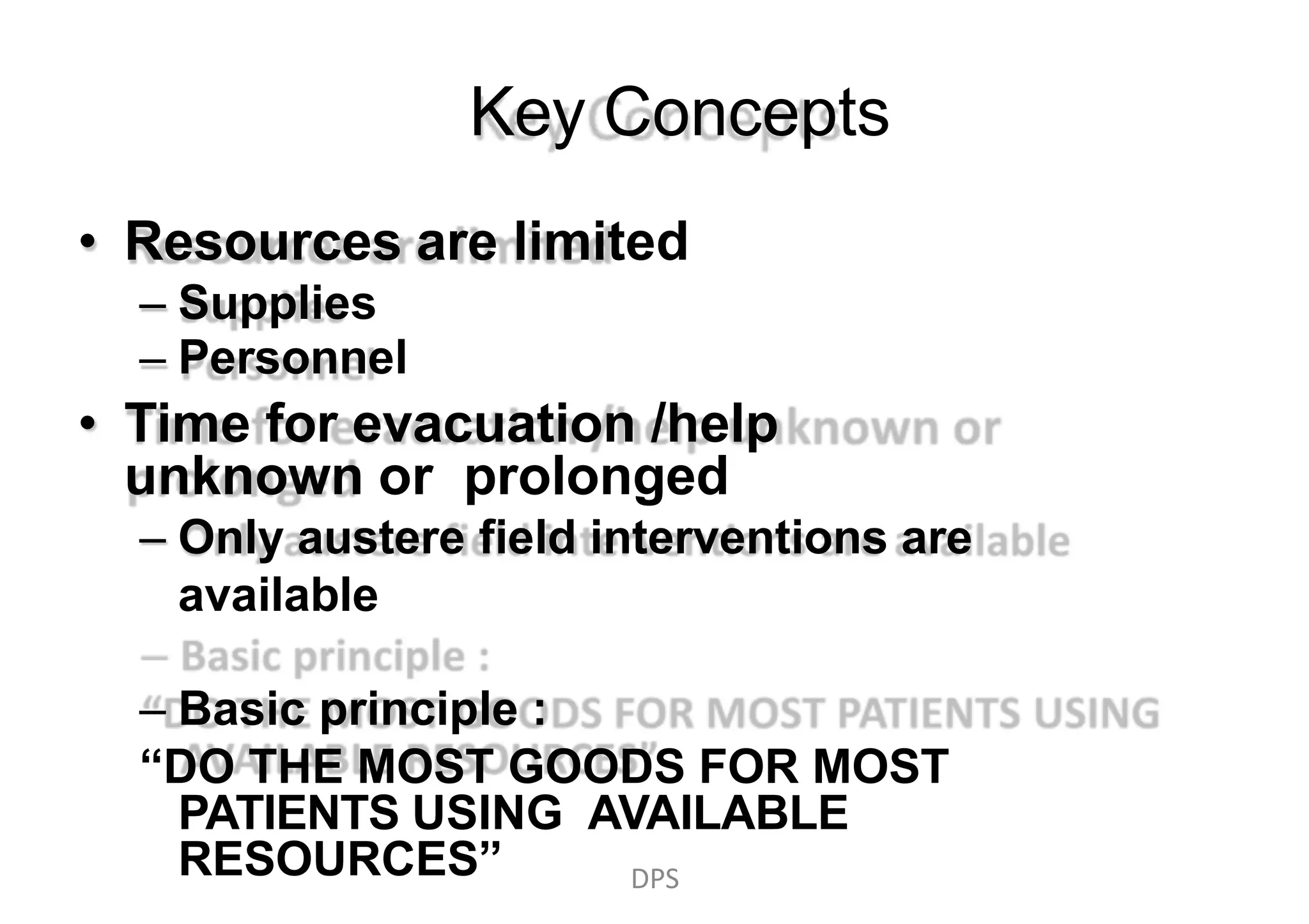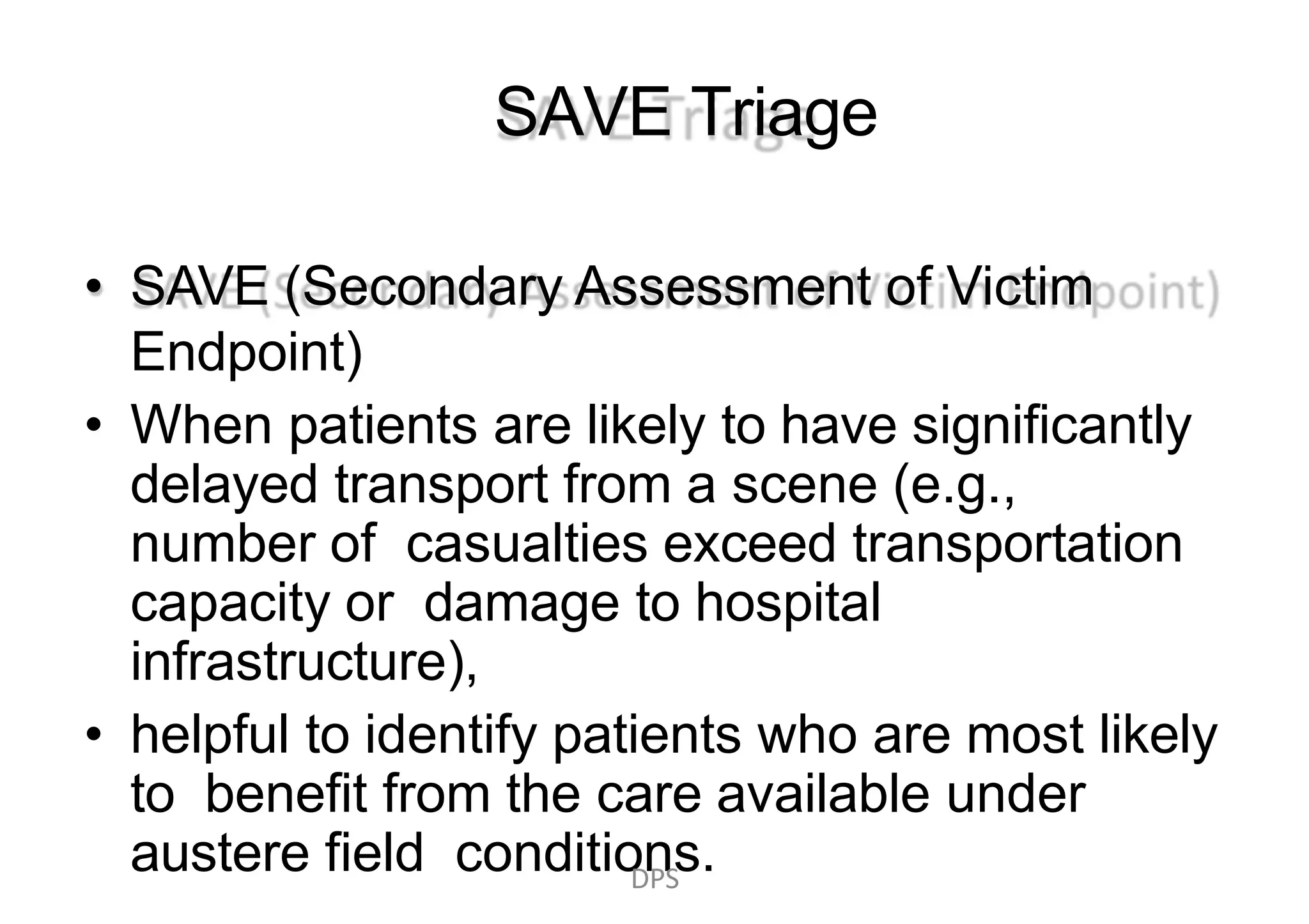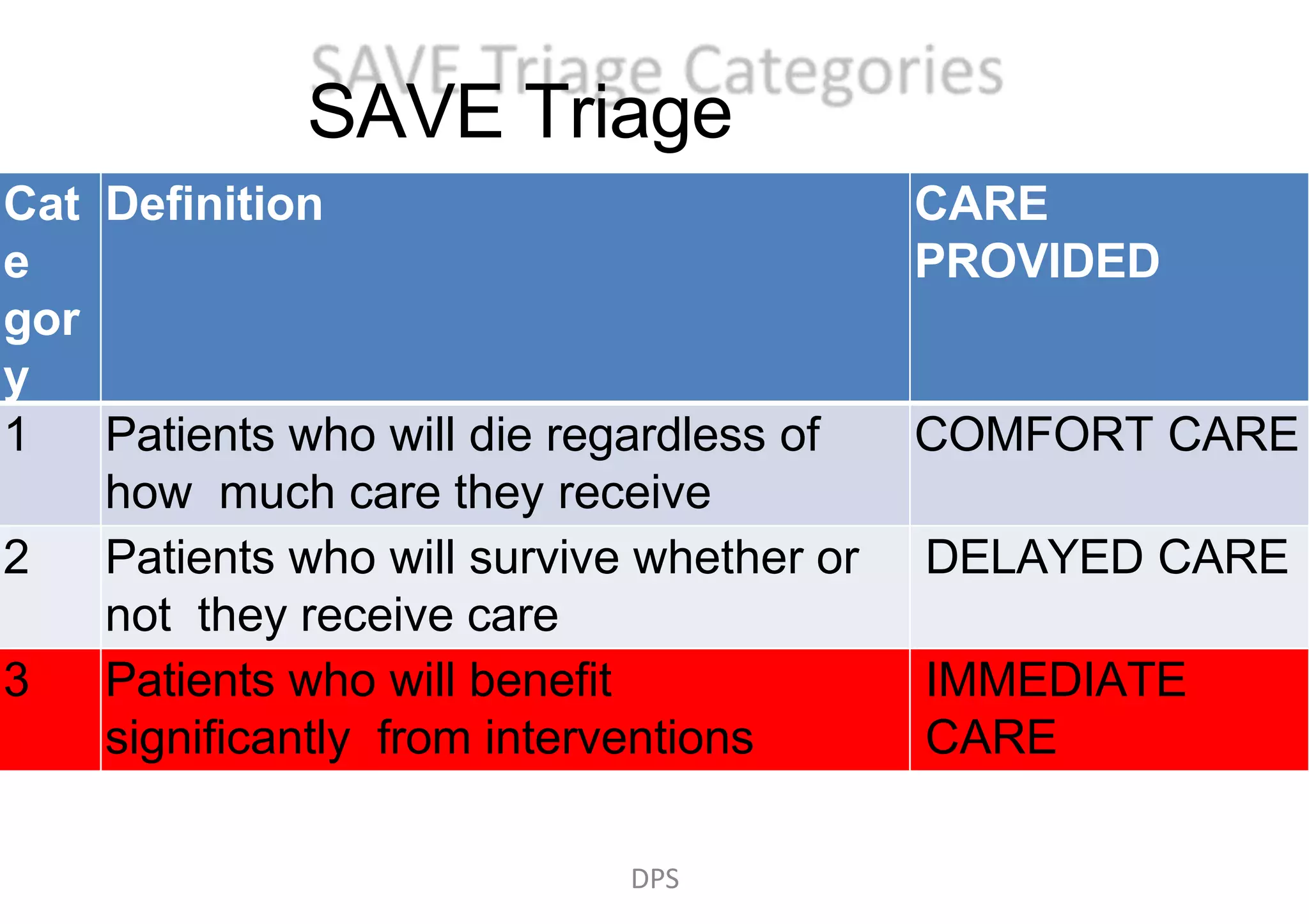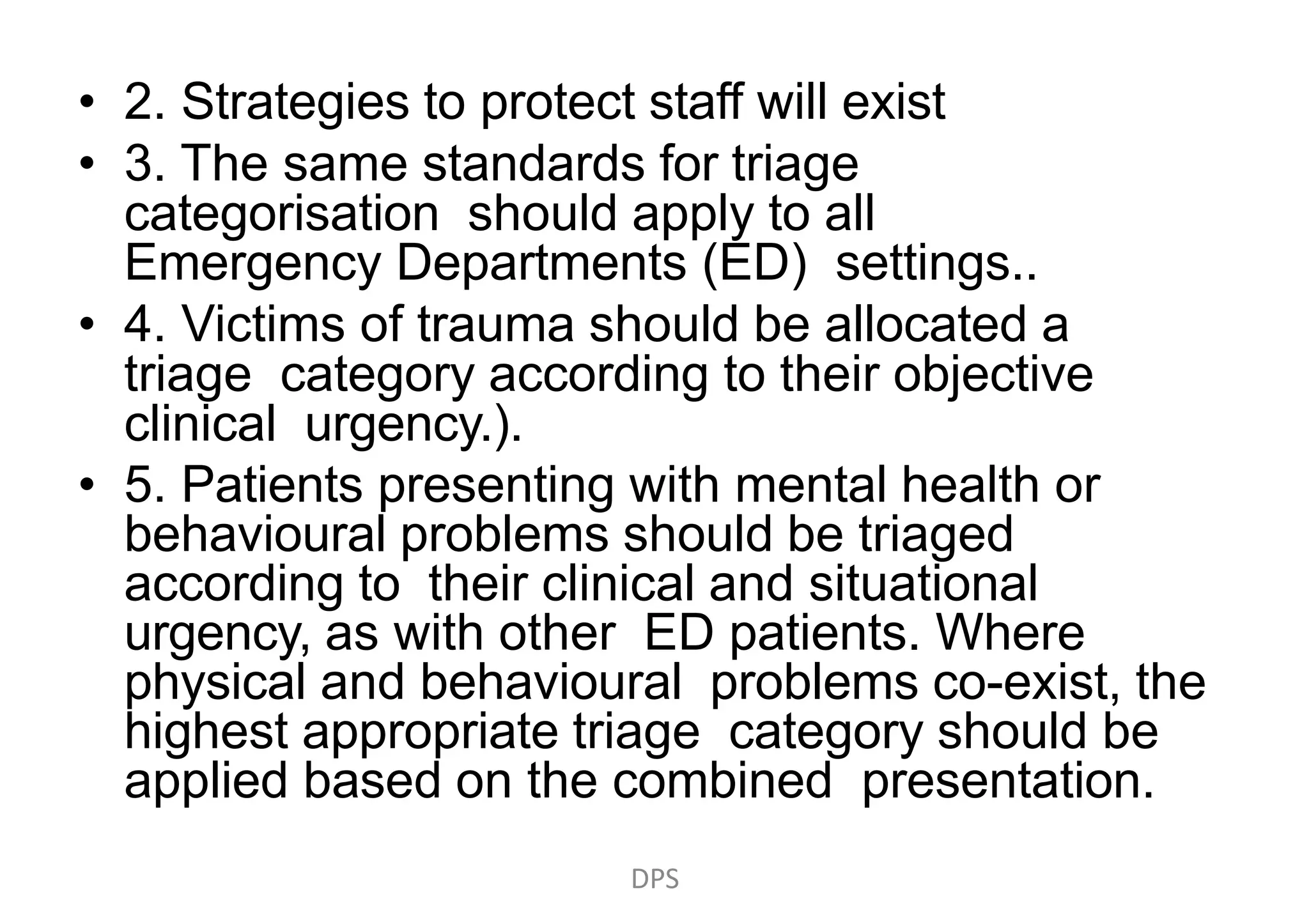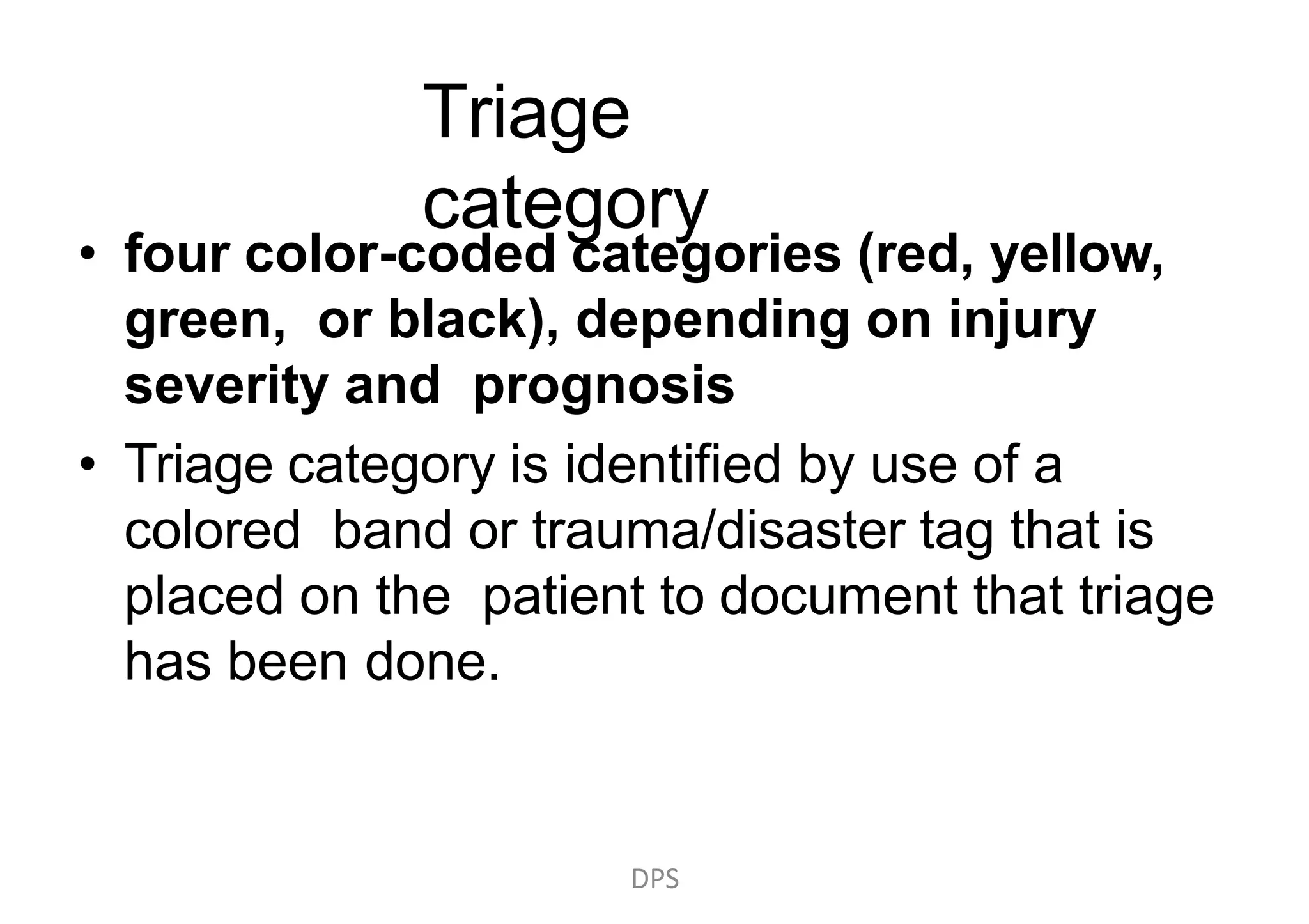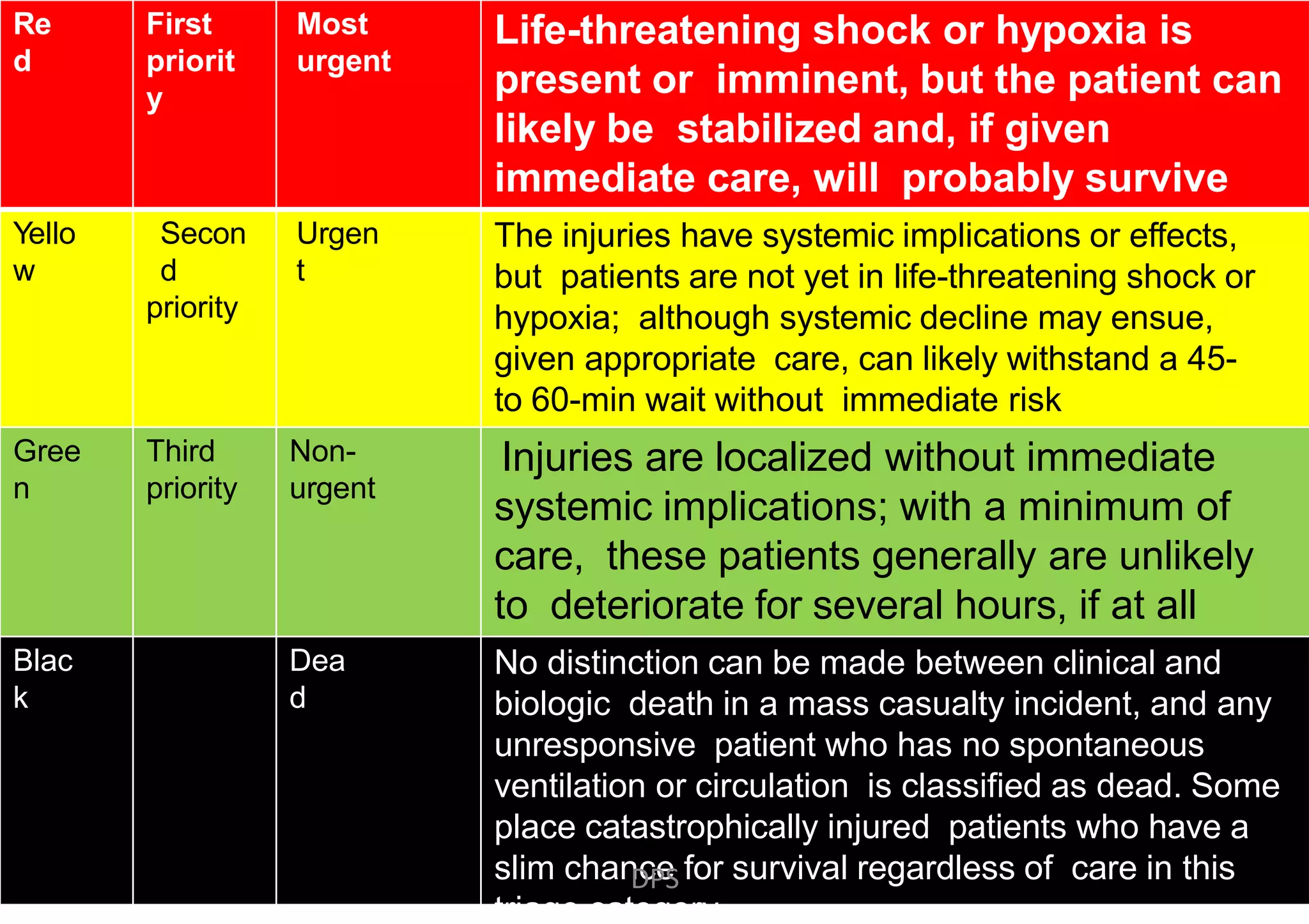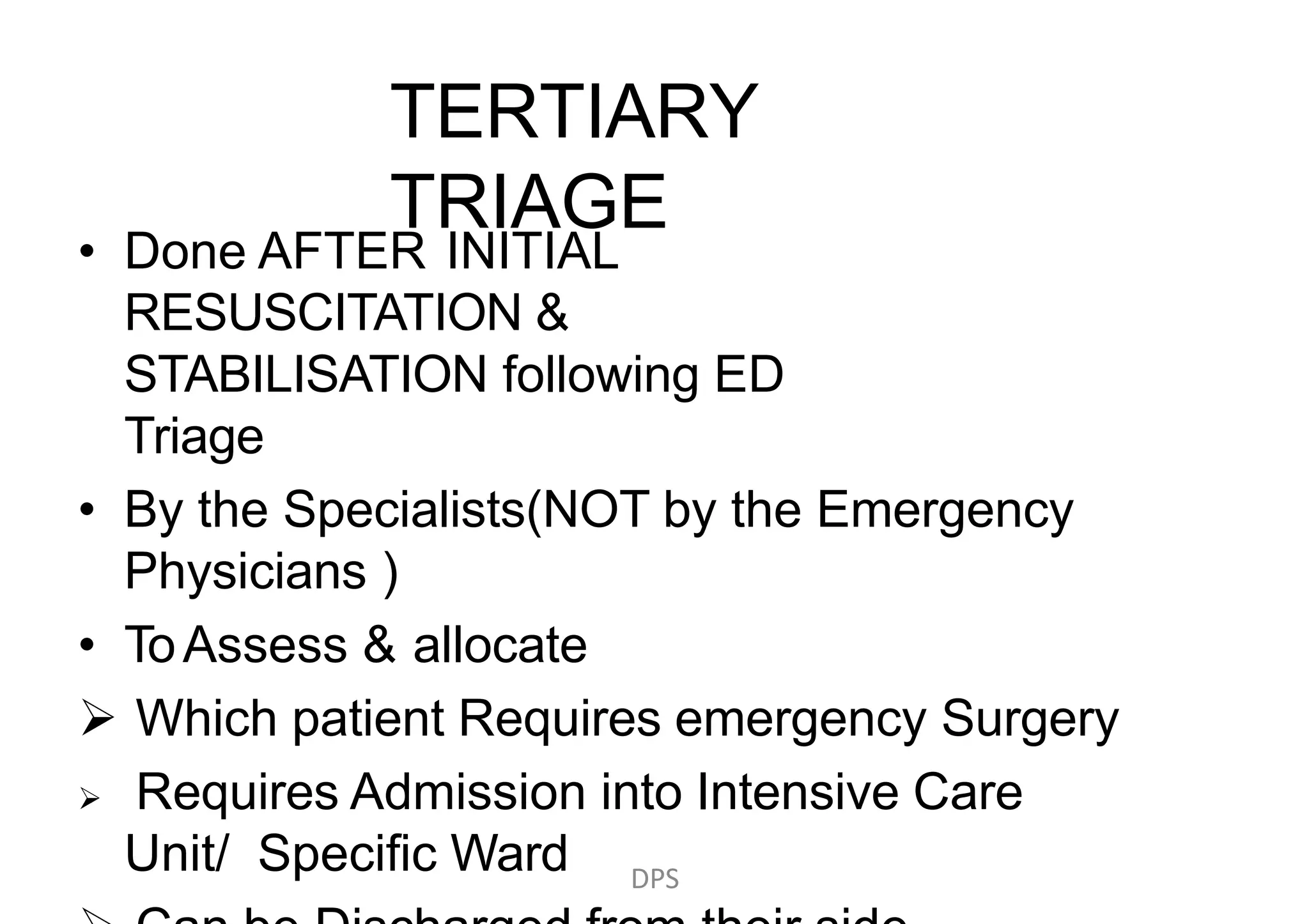1. The document discusses different types and purposes of triage. Triage is used to prioritize patient treatment during mass casualty events based on urgency of conditions. It aims to allocate patients to the most appropriate care provider and area to maximize lives saved.
2. Primary triage is done in the field to classify patients into categories of urgent need. Secondary triage in the ED further evaluates patients and assigns color codes. Tertiary triage by specialists determines who needs emergency surgery or ICU care.
3. The triage process involves classifying patients into categories of red (most urgent), yellow, green, or black (deceased) based on injury severity and prognosis to direct patients to the right level

